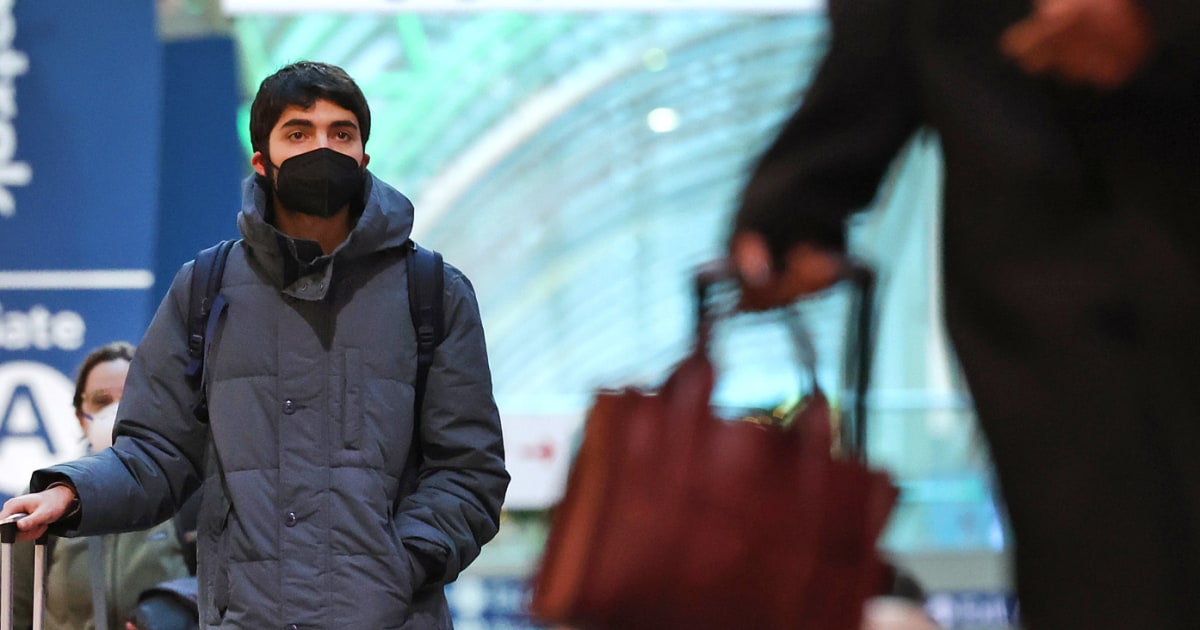
As a seasonal slew of respiratory illnesses circulate, it’s Covid that continues to send the most people to the hospital, the Centers for Disease Control and Prevention said Friday.
“Covid is still the primary cause of new respiratory virus hospitalizations and death,” CDC Director Dr. Mandy Cohen said at a briefing for reporters Friday.
The virus is responsible for about 15,000 hospitalizations and 1,000 deaths every week, she said.
With the CDC no longer tracking case numbers nationally, wastewater sampling — which looks for the virus in sewage — is the best way to gauge Covid activity across the country. According to the CDC’s wastewater dashboard, viral activity is rising nationally and highest in the Midwest.
The Midwest data could be a sign of what’s to come this winter as temperatures fall.
It’s not particularly surprising, given the weather, said Tara Smith, a professor of epidemiology at Kent State University in Ohio.
“What we’ve seen in the last couple years is that the South seems to start the wave earlier in warm weather because they’re going inside for AC, and the northern states tend to start earlier with cold weather because we’re stuck inside because of miserable weather outside,” she said.
In addition to the colder weather, as holiday travel starts to pick up, experts are expecting a rise in Covid infections to come with it.
What about the variants?
A Covid variant called HV.1 remains the predominant strain in the United States as of Nov. 25, accounting for about 32% of new cases, according to the CDC.
There are signs, however, that other variants may be picking up steam. The BA.2.86 variant, which was first detected over the summer, tripled in prevalence for the week ending Nov. 25 compared to the week before, up to 9% of new cases from 3%.
The variant gained the attention of experts over the summer because of its high number of mutations.
In November, the World Health Organization reclassified BA.2.86 as a variant of interest, up from a variant under monitoring, though it maintained that the public health risk from the variant remains low at the global level.
“It has a growth advantage but this is what we expect from variants that are classified as variants of interest,” Maria Van Kerkhove, the WHO’s technical lead for Covid, said at a media briefing Wednesday. “In terms of severity, we don’t see a change in the disease profile of people infected with BA.2.86 and its sublineages, including JN.1,” she said, referring to a newly identified descendant of the strain.
Ali Mokdad, chief strategy officer for population health at the University of Washington, said that while it may be alarming to see new variants take hold going into the winter, he isn’t too worried about what he’s seen so far.
“None of the variants that we look at right now are of concern,” he said. “All of them are omicron variants and we haven’t seen anything that’s scary that makes us say, ‘Oh, hold on a second, we need to be careful here.’”
What is more concerning, Mokdad said, is that very few Americans have taken the updated Covid vaccine. Currently, just 16% of adults in the U.S. have had the shot, according to the CDC.
Does the vaccine protect against the newest variants?
“There’s always a concern that something can pop up that is going to get around vaccine- or infection-induced immunity but I don’t think we’ve seen this yet,” Smith, of Kent State, said.
The updated vaccine, which targets the XBB.1.5 omicron subvariant, boosts the antibody response to circulating variants, including HV.1 and JN.1, according to a study posted online Monday from researchers at Columbia University. The study has not been peer-reviewed.
It’s critical that those who are eligible for an updated Covid vaccine get the shot, Smith said, as the vaccines have been effective in holding up against the most severe consequences of Covid.






